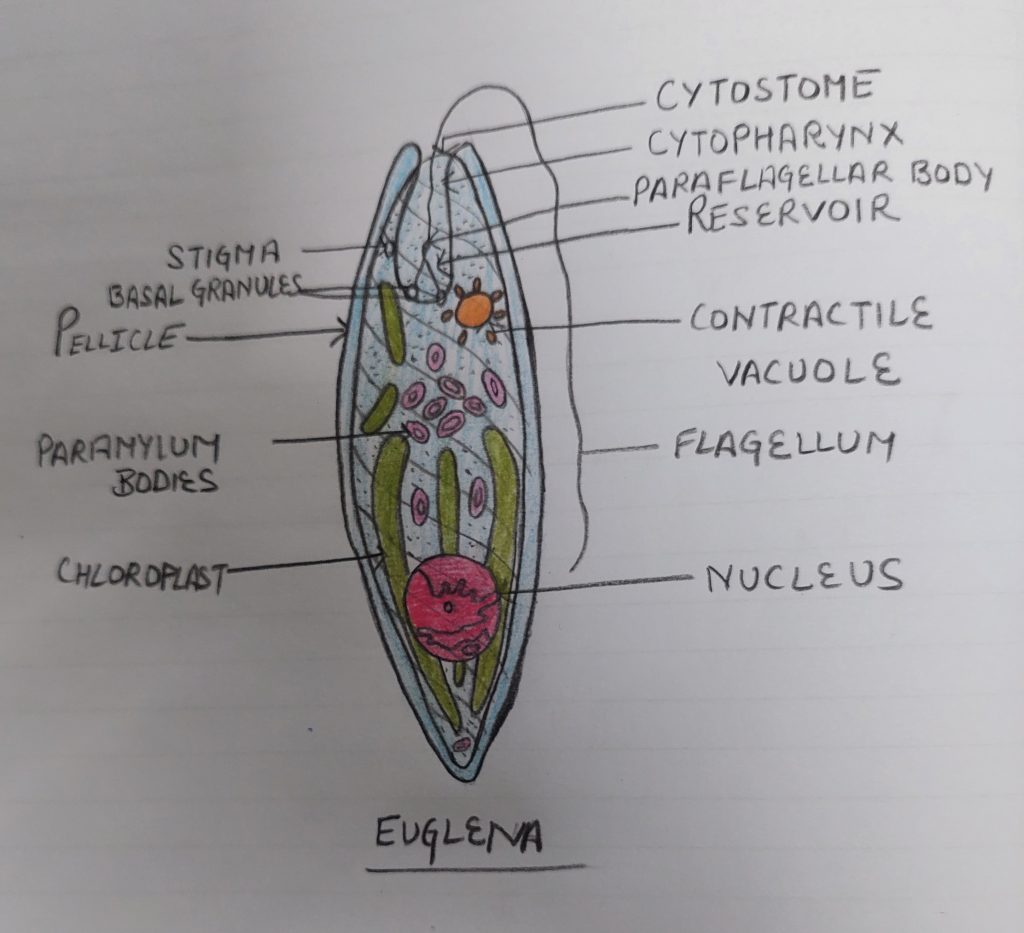It has major three groups which are:
| 1.Photosynthetic Protist : (a)Dinoflagellates (b)Diatoms (c) Euglenoids | 2. Decomposer Protist : Slime moulds | 3. Protozoan Protist : (a)Zooflagellates (b) Sarcodina (c) Sporozoan (d) Ciliates |
1.They are unicellular golden brown photosynthetic protist.
2. Nutrition is mainly holophytic , but some forms are saprobic ,parasitic ,symbiont & holozoic.
3.Cell wall is composed of cellulosic plates called theca or lorica having grooves longitudinal sulcus and transverse girdle or annulus.
4.Large nucleus called mesokaryon is present.
5. Asexual reproduction by zoospores or cyst. 6.Sexual reproduction is isogamous or anisogamous.
CHARACTERSTICS OF DIATOMS
•1. They do not possess flagella except in the reproductive stage.
•2.Siliceous cell wall do not decompose easily ,they were collected over millions of years on the sea floor called diatomites or diatomaceous earth.
•3.Most of the diatoms are phytoplankton some are benthos or some terrestrial forms grow in moist areas.
•4.They are unicellular in various shapes photosynthetic organisms.
•5.Cell wall is composed of two halves epitheca and hypotheca.
•6. Asexual reproduction by Binary fission and Sexual reproduction by fussion of gametes.
EUGLENOIDS
•1.They are unicellular flagellate ( few are non flagellates) occur commonly in fresh water pools however few occur in soil ,brackish water and even in salt water. Most common specie is Euglena viridis.
•2.Mixotrophic nutrition.
•3.Asexual reproduction is by longitudinal binary fission.
•4.Sexual reproduction is absent.

PHOTOSYNTHETIC PIGMENTS IN THESE THREE
| DINOFLAGELLATES Chlorophyll a, Chlorophyll c, α carotene ,Xanthophyll (peridinin) | DIATOMS Chlorophyll a, Chlorophyll c, Carotene , Diatoxanthin , Diadinoxanthin, & Fucoxanthin. | EUGLENOIDS Chlorophyll a, Chlorophyll b, Xanthophyll , β carotene |
•1.They possess saprophytic mode of nutrition.
•2.Locomotion by pseudopodia.
•3.Asexual reproduction by fragmentation,Sclerotia ,&by sporangia.
•4.Sexual reproduction is isogamous or anisogamous.
PROTOZOAN PROTIST
•This include four phyla
•ZOOFLAGELLATES 2. SARCODINA 3.SPOROZOA 4.CILIATES
•MAIN CHARACTERSTICS OF THESE ARE:
•1.They are widely distributed in nature .
•2.They are unicellular uninucleated or multinucleated.
•3.Respiration and excretion through body surface.
•4.Asexual reproduction by Binary fission, multiple fission or by budding.
•5.Sexual reproduction by syngamy or conjugation.
| PARASITE | VEHICLE OR VECTOR | DISEASE |
| 1.Trypanosoma gambiense | Tse-tse fly(Glossina palpalis) | Sleeping sickness |
| 2.Leishmania donovani | Sand fly (Phlebotomus sp.) | Kala azar / dumdum fever/visceral leishmaniasis |
| 3.Giardia intestinalis | Contaminated food or water | Giardiasis |
| 4.Entamoeba histolytica | Contaminated food or water | Amoebic dysentery |
| 5.Trichomonas vaginalis | Through sex | leucorrhoea |
